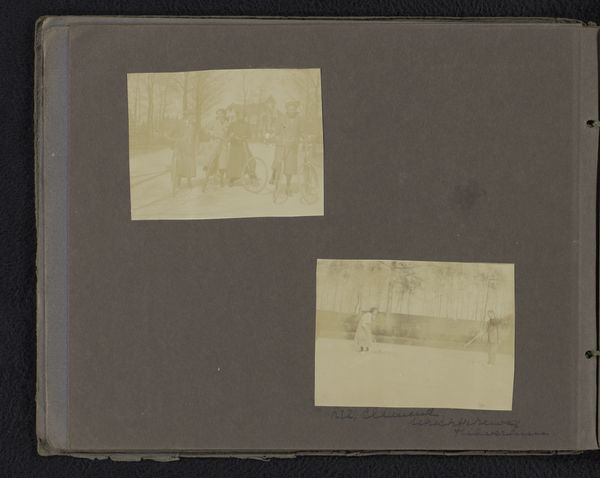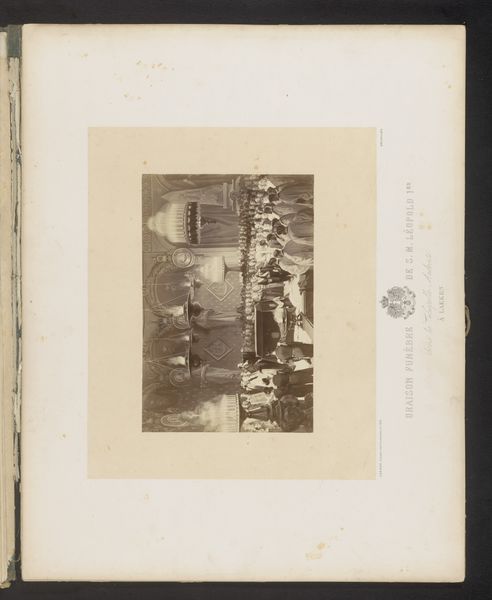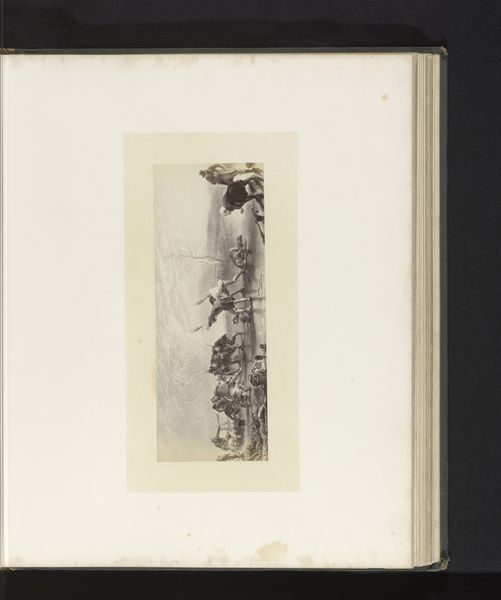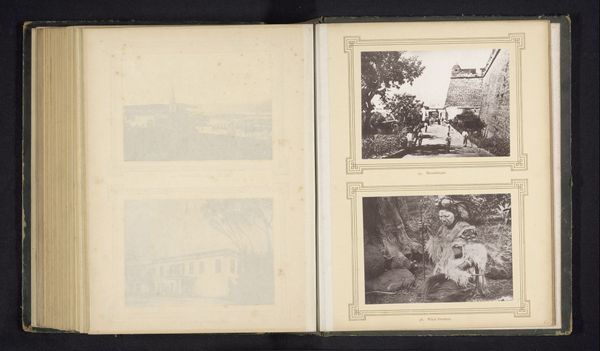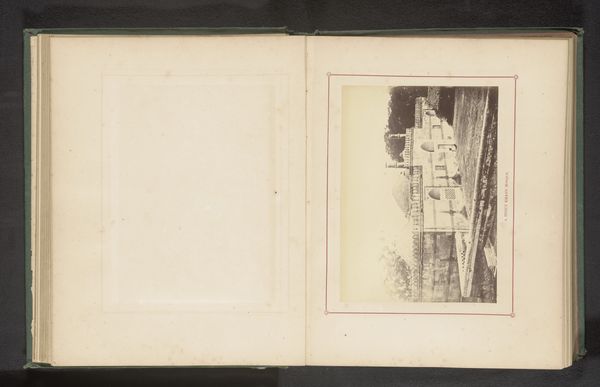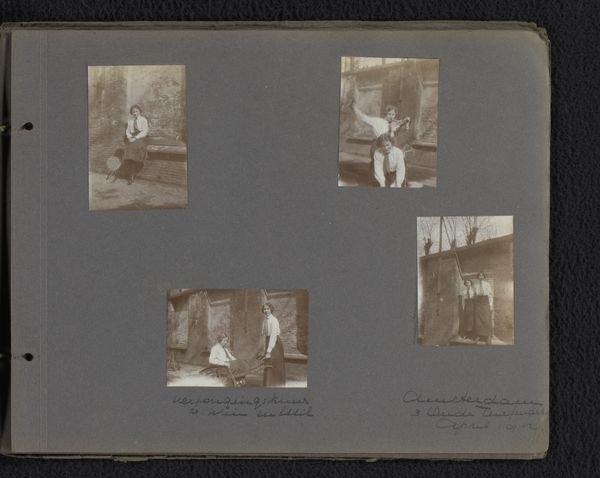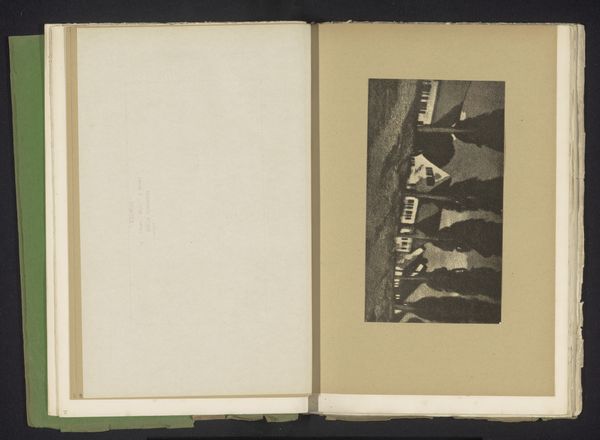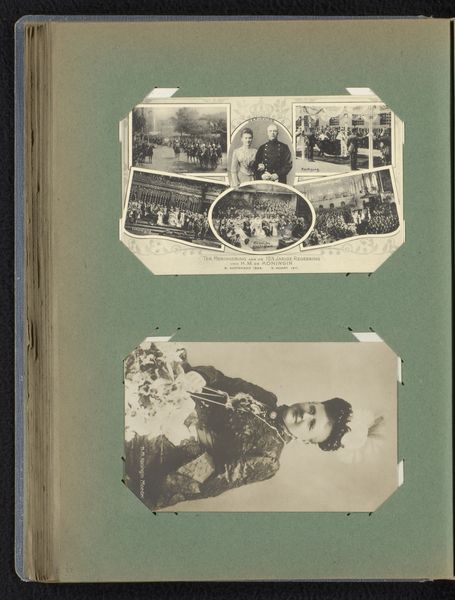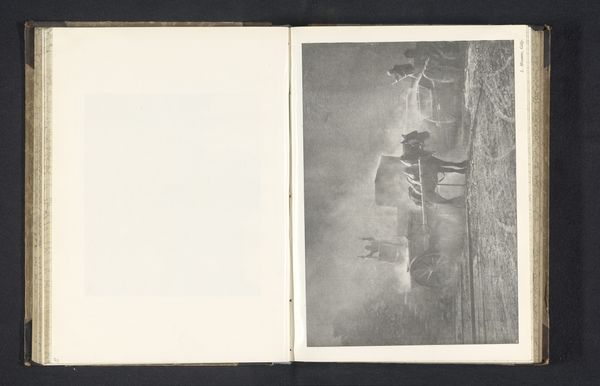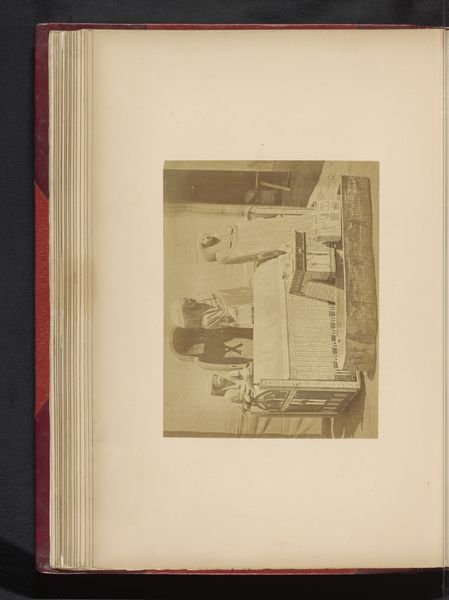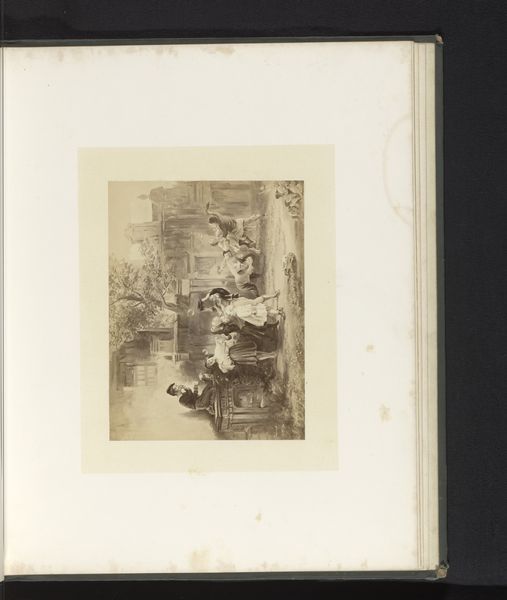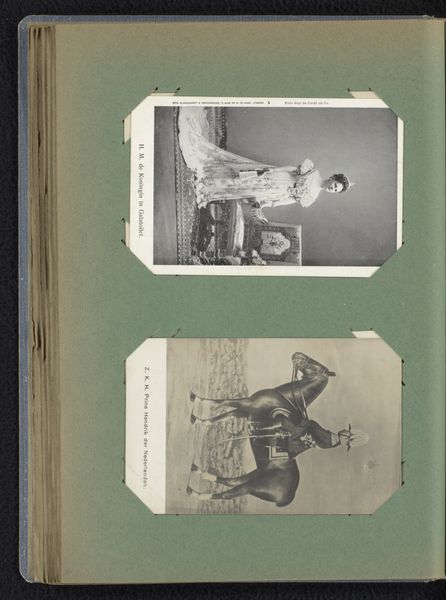
Twee prentbriefkaarten van het bezoek van koningin Wilhelmina en prins Hendrik aan Friesland en twee portretten van prinses Juliana en Wilhelmina als baby 1880 - 1909
0:00
0:00
photography, albumen-print
#
portrait
#
aged paper
#
toned paper
#
ink paper printed
#
photography
#
group-portraits
#
cityscape
#
watercolor
#
albumen-print
#
realism
Dimensions: height 137 mm, width 90 mm
Copyright: Rijks Museum: Open Domain
Curator: This piece is titled 'Twee prentbriefkaarten van het bezoek van koningin Wilhelmina en prins Hendrik aan Friesland en twee portretten van prinses Juliana en Wilhelmina als baby', which translates to "Two postcards of the visit of Queen Wilhelmina and Prince Hendrik to Friesland and two portraits of Princess Juliana and Wilhelmina as baby." It’s by Jos Nuss & Co. and dates from 1880 to 1909, employing albumen prints. Editor: It has a muted, sepia tone, making the scenes seem quite distant and formal. The light is very soft, especially on those baby portraits; very touching in that way. Curator: The albumen print process, prevalent during that period, involved coating paper with albumen from egg whites before applying the photographic emulsion. Notice how this yields a smooth surface which enhances the details captured. And what I find interesting here, is the contrast between the large-scale public spectacle and the domestic intimacy captured in the baby portraits. Editor: Indeed, that juxtaposition tells a fascinating story! The monarchy projected itself into everyday life with public appearances, while privately cultivating its image through tender portraits. The presence of the crowns at the top further emphasizes this sense of royal lineage, power, and continuity. The crowns feel like they float atop mother and daughter portraits. Curator: The inclusion of these portraits as almost equal in importance with the royal visit really blurs the lines of public and private spheres; something photography was certainly helping to do at that time, especially for popular consumption of media, here depicted as postcards. Editor: Look at the details though, for example the almost architectural treatment of baby Princess Juliana's christening gown. Every tuck and frill must have been a feat of workmanship in the fabric production, even when considering the royal household would engage talented and professional women. The photograph renders it, perhaps unintentionally, as a monumental testament to skills. Curator: Precisely, each postcard represents a kind of labor – from the production of the postcards themselves to the construction of royal imagery. The workers behind the camera and printing press played their part, reflecting and contributing to these social relations and depictions of royalty. This allows the everyday person to connect with a Royal Family. Editor: It certainly seems a carefully crafted narrative, all carefully arranged to evoke particular feelings towards royalty through specific imagery that has emotional connection. Curator: Analyzing this artwork truly demonstrates how photography was intertwined with industry and even political identity. It’s no wonder photography became one of the most widespread art forms, especially given its capacity to convey both public images and intimate stories. Editor: A poignant visual snapshot frozen within a moment in time. It definitely stirs curiosity to imagine the feelings it must have inspired during the moment of its release.
Comments
No comments
Be the first to comment and join the conversation on the ultimate creative platform.
